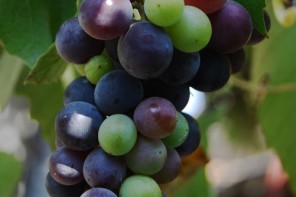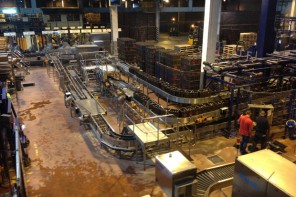I recently read a really interesting article in TIME magazine which talked about the Fair Trade coffee industry and highlighted that Fair Trade practices were created to help small farmers but that they may have now hit their limit.
Here is an excerpt from the article by Ezra Fieser entitled “What Price for Good Coffee?“
“Ever since Jesuit monks brought coffee to Guatemala three centuries ago, raising the beans has been a losing business for small farmers. Conditions are miserable – try lugging 100lb. of fertilizer up a mountain – and even though coffee is the world´s second most valuable traded commodity, after oil, the money it brings in in measly. It´s not enough to live on, says Luis Antonio, who has grown coffee near Quetzaltenahgo, in Guatemala´s western highlands, for three decades but gets deeper in debt each year. What we earn isn´t enough to buy food for our children. Antonio and the world´s 25 million other small coffee growers don´t have a lot of career alternatives. So you´d think they would be enthusiastic about Fair Trade – a global campaign that for 25 years has sought to bring struggling Third World farmers, including Antonio, out of poverty by paying them higher-than-market prices for everything from coffee to quinoa. Along the way, it has recruited retail giants like Starbucks, which is the globe´s largest purchaser of Fair Trade – certified coffee.”
Now comes the catch… “But the Fair Trade coffee movement is in question, as some backers raise concerns about whether it has reached the limit of how much it can help. In a private industry survey last year, 179 Fair Trade coffee farmers in Central America and Mexico, more than half said their families have still been going hungry for several months a year. Massachusettes Fair Trade firm Equal Exchange spokesman Rodney North admits, There is potential disconnect between what the buyer thinks is Fair Trade is accomplishing and the situation on the ground, from Latin America to Asia.
Fair Trade pays $1.55 per lb. for Antonio´s organic coffee, almost 10% more than the market price. But Antonio is left with only 50c per lb. after paying Fair Trade cooperative fees, government taxes and farming expenses. By year´s end, he says, from the few thousand pounds he grows, he´ll pocket around $1000 – around half the meager minimum wage in Guatemala – or $2.75 a day, not enough for Starbucks´ cheapest latte.
The article goes on to explain how other farmers complain that Fair Trade prices ´haven´t kept up´ with the costs the small farmers face. For most coffee growers, Fair Trade is still slightly more lucrative than the open market. Two years ago, the Germany-based Fairtrade Labelling Organizations International (FLO), which sets worldwide prices and standards, raised the minimum per-pound price of nonorganic coffee 9c, to $1.35. That´s 15c higher than the current market rate. And yet, according to Fair Trade researcher Christopher Bacon of the University of California, Berkeley, the per-pound price that´s needed for farmers to rise above subsistence is really more than $2. But such a big jump could mean that Fair Trade could help fewer farmers – even Starbucks is likely to buy less java at that cost. Instead, the FLO´s main growth strategy is to keep recruiting retailers like Starbucks.
“Few foresaw this dilemma a decade ago, when coffee prices, which had been falling since the end of the Cold War, dropped to as low as 45c per lb. Fair Trade was the small farmer´s saviour during that crisis, paying twice the going rate. Starbucks joined the cause and this year has pledged to double the amount of Fair Trade coffee it buys, to 40 million lb., 40% of the Fair Trade beans the U.S. imports.
In lieu of imposing a major price hike, the FLO is reviewing other ways it can help farmers. It´s making cheaper loans more widely available, providing more technical assistance to help farmers grow better quality beans and may begin automatically adjusting its minimum price for inflation.
With $1.75 billion in worldwide sales last year, Fair Trade is still a small player in the $70 billion global coffee industry, dominated by leviathans like Nestlé and Kraft. Because producer countries reap only $5 billion of that $70 billion, Fair Trade can help growers get more for their share. Fair Trade is still, and will remain, a better deal for farmers, says Bacon. But it can only help so much. This isn´t a condemnation of the Fair Trade model says Peyser. It´s a fact of life. One that all coffee drinks may have to swallow.”
What do you think…? Would you be prepared to pay close to R30 for a fairly traded latte…?
Nicola
x




